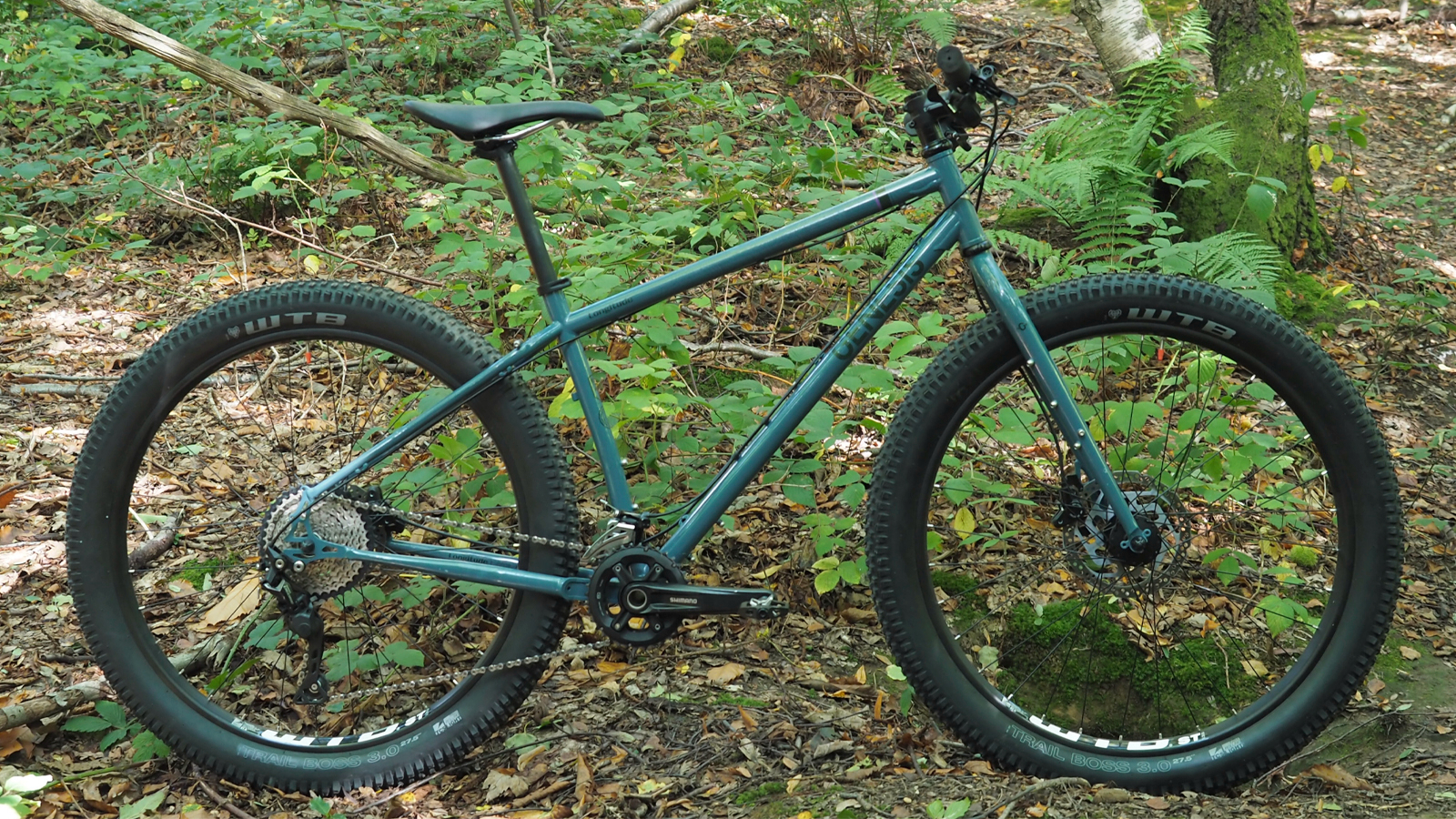
If fondness for a bike relates to the number of adventures you have on it, it’s no surprise that Genesis riders are often evangelical about their steeds. Their all-steel Croix de Fer is a touring and all-road favorite, and the Longitude is its straight-barred off-road MTB sibling, with braze-ons galore and the flexibility to take 27.5in wheels with 3in tires, or regular 29ers.
I’ve had the latest version for three months over fall/autumn and winter and I’ve been surprised by what an agreeable companion it’s been – for lo-fi everyday riding as well as bikepacking. I’ve taken it across Wales fully loaded, held on tight over southern singletrack, and regularly reached for it on sloppy local rides as a winter alternative to a gravel bike when comfort and mud clearance have been the order of the day.
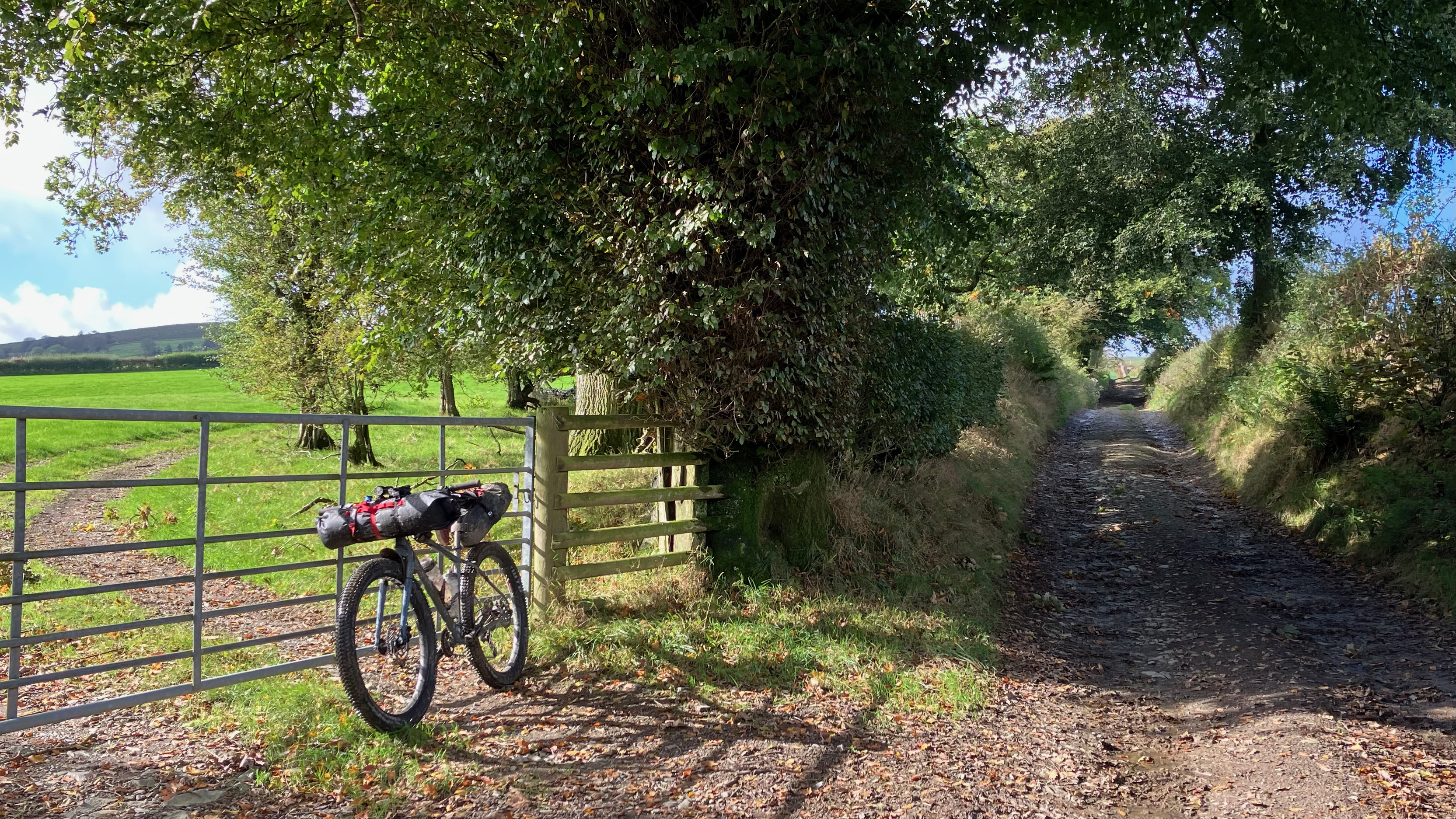
It’s evolved gently since its 2014 launch; the current iteration comes with 27.5x3in tires by default, and a reliable, workmanlike spec based around the midrange Shimano Deore drivetrain and hydraulic brakes.
I’ve ridden it more than I thought I would over the test period, even against fancier bikes. It’s far more than a 90s throwback; its brakes are more than capable, for a start; its handling is reassuring, with or without luggage; and low-pressure plus-sized tires are an eye opener on a rigid bike, even if they’ve now become relatively niche after their mid-2010s heyday.
The Longitude would definitely have a place in my fantasy bike shed. A mundane bean-counter might point out that a similarly priced hardtail would be more versatile on the trail and not much heavier, given the weight of rigid steel forks, but I suspect I know which would last longer, be easier to maintain, and win more hearts.

Design and geometry
The Longitude frameset is made from Genesis’s own branded 4130 double butted chromoly steel. Its a dependable workhorse material, and there’s added reinforcement around the head tube.
The geometry is relaxed and stable, with a comfortable, relatively upright riding position. It’s designed to be well mannered even when fully loaded for touring – but as I found out, its handling is pleasingly direct and far from sleepy. There’s clearance for 27.5 x 3in tires, and it’s built purely for a rigid fork; so you couldn’t swap in a suspension fork without messing up the geometry.

All the cabling is external, and to take versatility to the max, the rear dropouts are singlespeed compatible. Since it’s built for off-road expeditions, it’s festooned with dropouts: at the front you can run ‘anything’ cages, high racks or old-school low-riders, plus regular racks at the back, and even mudguards, so it really is designed for going round the world with as much kit as you want, if you want. There are three sets of bottle mounts; about the only thing missing from the full bingo set are top-tube feed-bag mounts.
The all-steel forks add a chunk to the bike’s 14kg weight (for a size medium tested), but as well as being great for luggage, they seemed to help the bike hit its nice balance between stiffness and compliance.
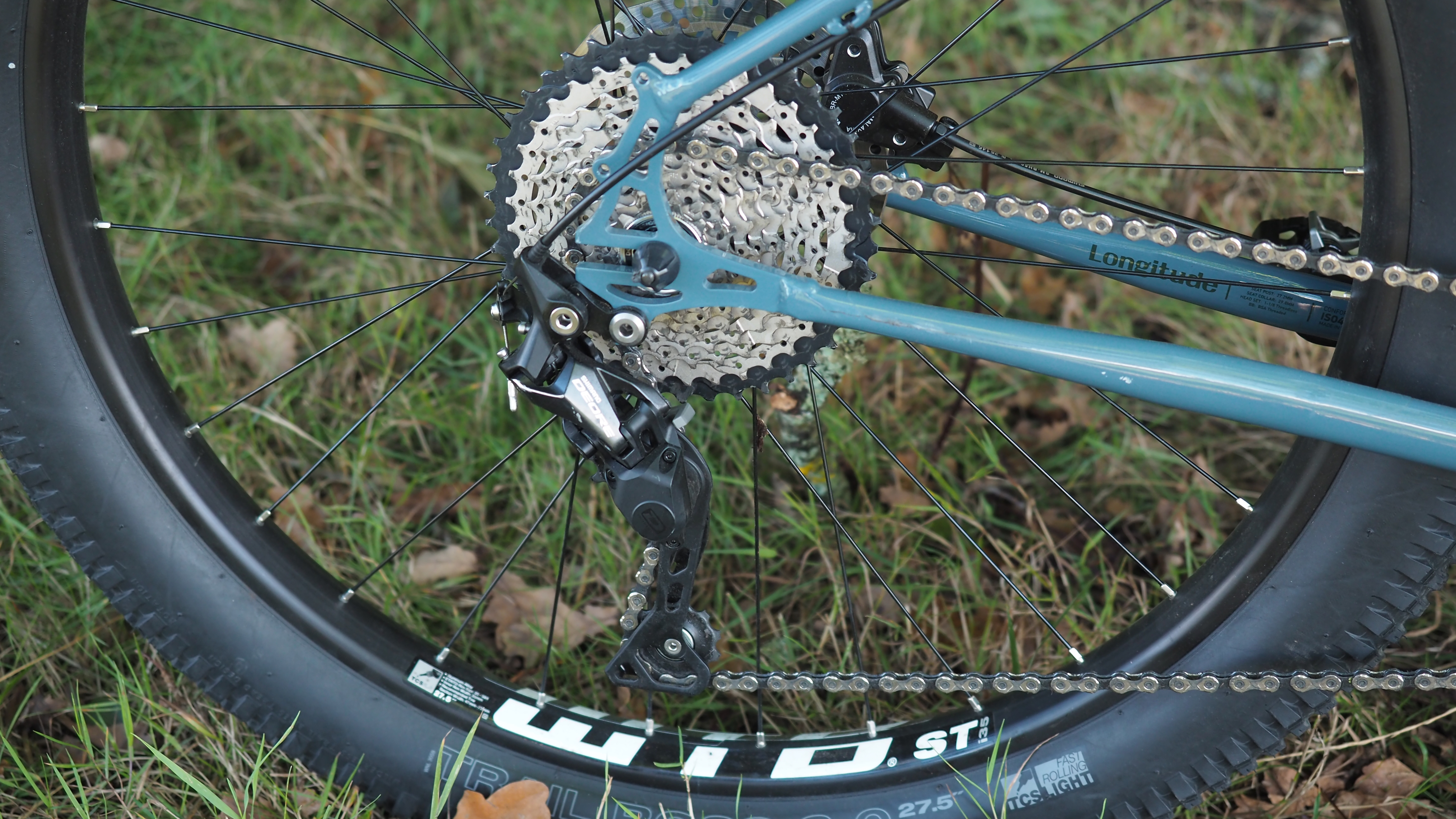
Components and build
The component list is based around a midrange Shimano Deore 2x10-speed drivetrain, and entry-level Shimano MT400 hydraulic brakes, both of which were surprisingly capable. The stock rotors are only compatible with resin pads, so you’d need to upgrade if you wanted to use sintered – maybe on long gritty tours – though on our riding they’ve been fine. The 2x10 setup (26/36 x 11-42) gives you exactly the same low gear as a 32 x 10-52 1x setup, and a slightly higher high gear, with much lower costs when it comes to replacing parts.
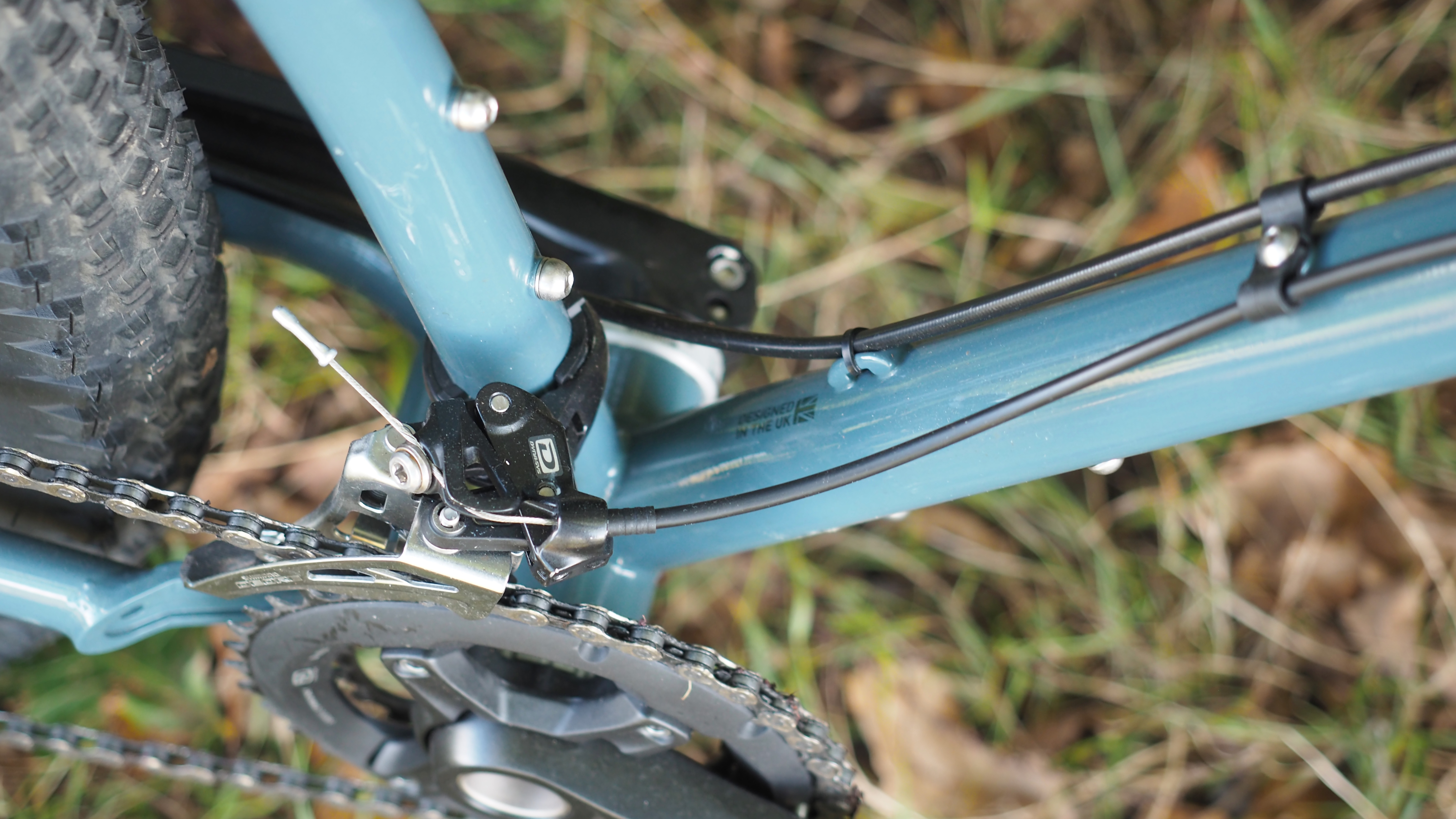
Cockpit, seatpost and saddle are all Genesis own-brand, and the wheels are 27.5in WTB rims laced to hard-wearing Shimano Deore quick-release hubs. Tires are specced as summer-oriented WTB Trail Blazer 27.5 x 2.8, though my sample came with slightly more aggressive Trail Boss 3.0s.
None of the components are going to win prizes for light weight, but they’re pretty much exactly what you’d spec if you wanted to hit a sweet spot of value and dependability.
Ride, handling and performance
My first adventure with the Longitude was a three-day MTB bikepacking trip in fall/autumn over the Trans Cambrian route in mid-Wales. I loaded it with a regular handlebar roll and a seatpack, kept the stock tires on and had a whale of a time. The fairly upright riding position was all-day comfortable, and while little of the terrain was technical, there were enough roots and gullies for me to appreciate the predictable handling and the steady, willing way the bike continued to winch its way up loose or steppy bridleway climbs, and plough through yet another watery trench of indeterminate depth.
Experimenting with tire pressure made all the difference with the plus-sized 3in rubber, especially as it was the bike’s only source of shock absorption. Too soft and it was squirmy on corners, too firm and there was too much buzzing and bucking, but hit the sweet spot – 7-8psi, for me – and the soft tires moulded around stones and trail chatter and kept you floating smoothly and evenly. The whole bike was nearly 3kg heavier than the hardtail I’d normally use for bikepacking, but I only noticed that pushing it uphill, and I didn’t pine for the suspension.

The only thing that wasn't so brilliant on this trip were the few sections of greasy mud, where the wide, relatively shallow-treaded tyres struggled to dig in, but there are still a few good quality bigger lugged 27.5in plus sized options on the market as alternatives.
When put to singletrack duty on woodsy trails and the chalky South Downs, the Longitude was similarly smile-inducing. In the dry, the level of grip was entertainingly good, and this, combined perhaps with the rigid forks, gave a directness and level of involvement in the steering that I haven’t had for some time.
The only times I came a bit unstuck from the lack of suspension were when I got pitched forward more than I’d planned for on the odd drop, or going at speed over repetitive ridges in a trail, when the bike and the ground would occasionally get wobblingly out of sync with each other
One of the things Longitude fans appreciate is its versatility: Longitudes get used and abused as commuting bikes, as well as low-maintenance MTBs, all-road tourers and bikepacking rigs. So I was interested to pop some 29-inch wheels on, even if it was a mild faff to track down a conversion kit and adapt a pair of my thru-axle wheels for quick release.
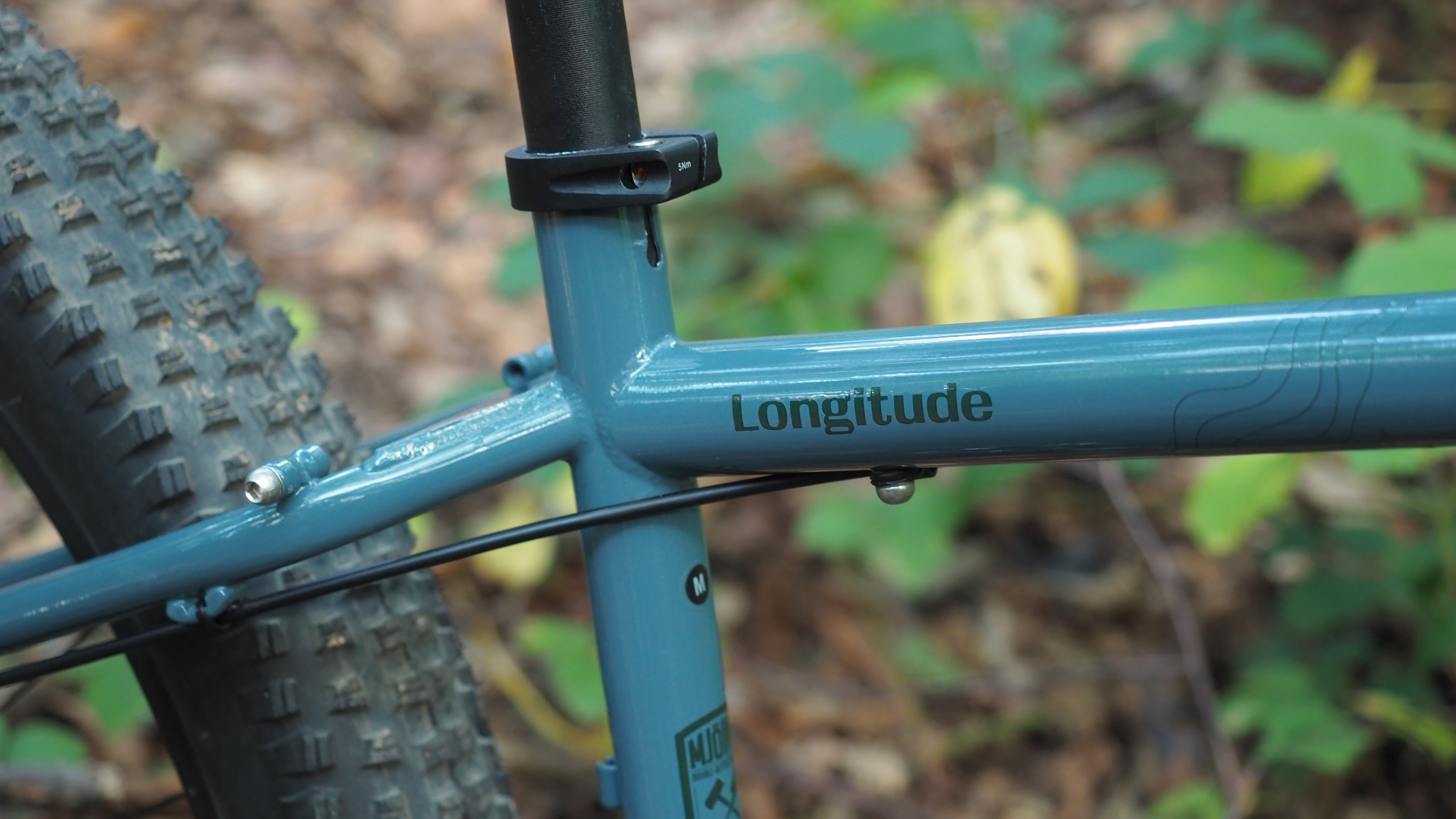
A brief commuting experiment with fat road tires was a pleasant, smooth, stable experience, and surprisingly spritely, and almost made me think of adding a fast hybrid to my fantasy bike shed, such was the comfort of straight bars compared with my usual drops. Tiny tires on such a wide-spaced frame did look a bit odd though, and would’ve only looked odder with mudguards, I suspect.
Keeping the 29er wheels and moving to regular 2.25in XC MTB iyres for a few weeks made the Longitude a good choice for soft, wet conditions because the mud clearance was huge. It felt quicker than with the original 27.5s, too, but that was probably down to slightly more expensive, lighter wheels. All else being equal, a 27.5in setup would be lighter than 29.
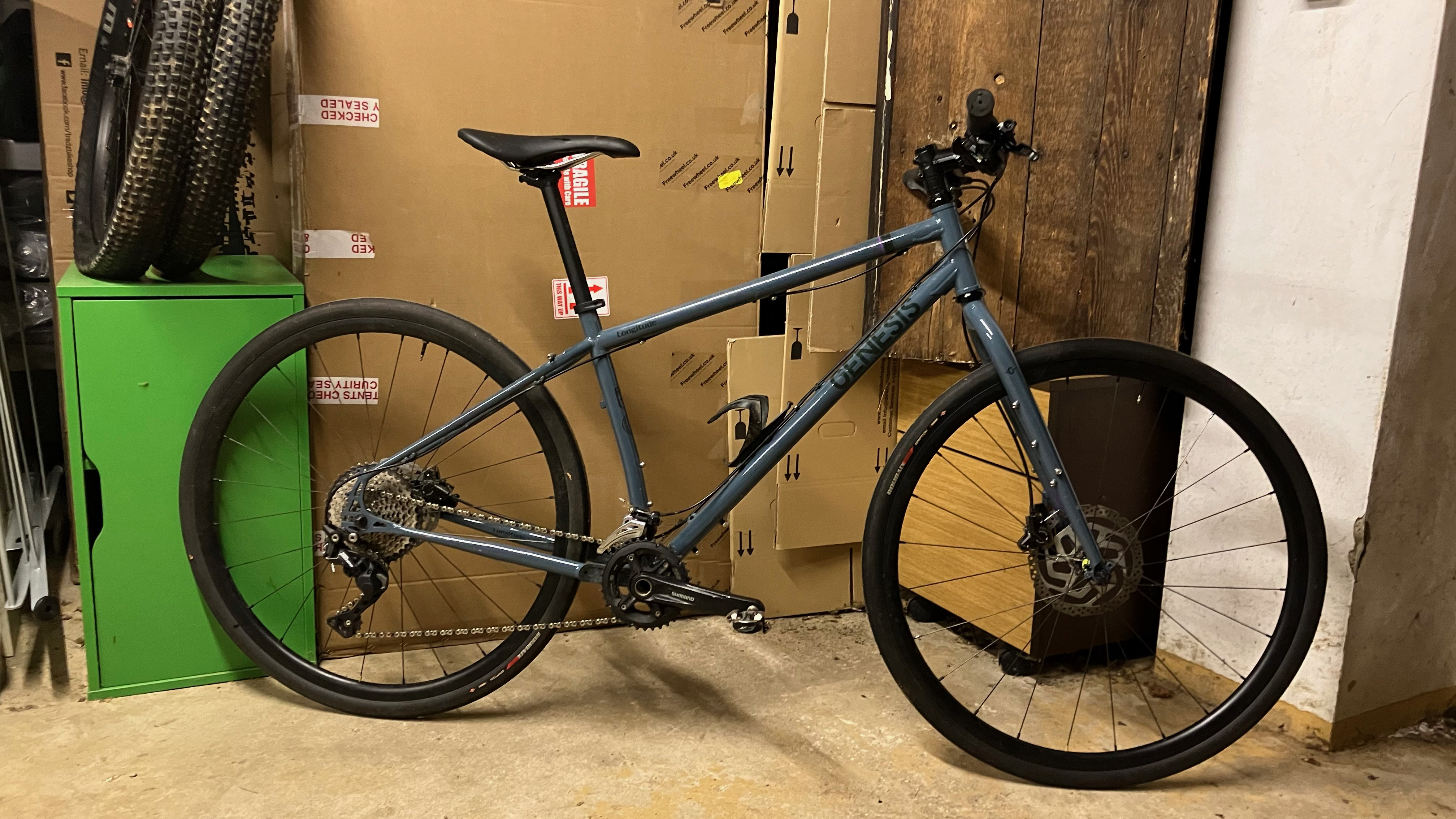
Though I liked the 29er setup for those muddy winter rides, hard, rocky, or broken ground was sometimes more of a chore than on the 27.5s, particularly towards the end of long rides when fatigue set in, or when the higher pressure 29er tires scrabbled for grip. In both of those scenarios the 27.5s tended to shine, and if I was keeping the Longitude, I’d stick with the more characterful and comfortable 27.5s most of the time, probably with slightly grippier tires.
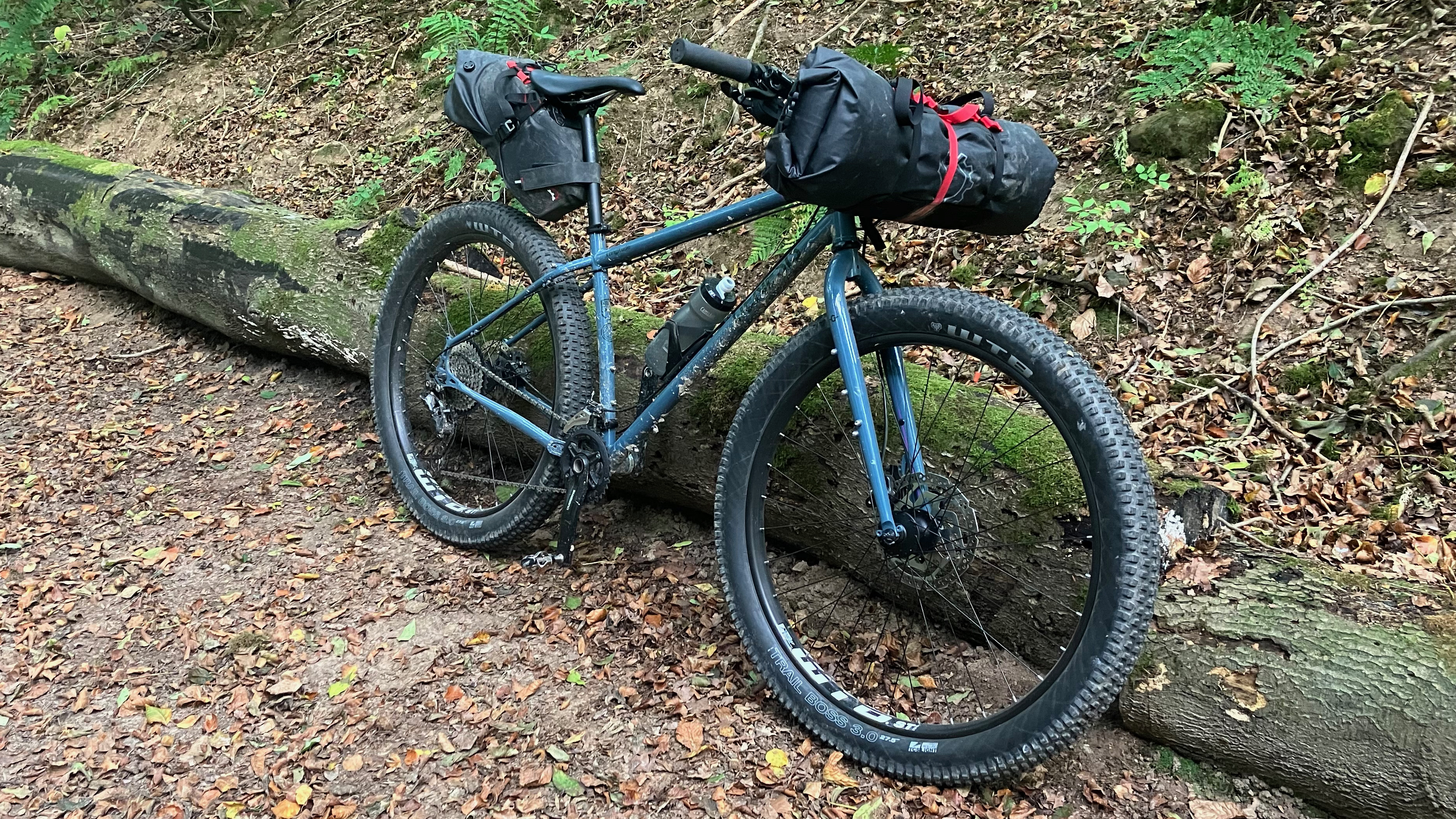
Verdict
There are faster, lighter, flashier bikes for almost everything the Longitude can do, even at its relatively modest price point. But I’m not sure that’s the point. I liked its all-day comfort and its relative simplicity. I loved the way it would have a go at anything, like a cheerful reliable hound, even if it could be easily outpaced in some scenarios.
I thought it was much better for the kind of bikepacking I do than a gravel bike, too. And most of the time I’d happily choose it for bikepacking over my lighter but more aggressive hardtail; and for winter riding when I want the mud clearance or not to mess up a more expensive bike; and for the (many) times when I’m not doing particularly technical or fast off-road but I want something more chilled or capable than a gravel bike. So yeah, I’ll miss it when I need to return it.
Test conditions
- Weather: UK autumn-winter; damp to wet, mild to freezing
- Surface: Moorland tracks, woodland, chalk, gravel
- Trails: Trans Cambrian, South Downs, Friston Forest, local woods/fields bridlepaths, road
Tech specs: Genesis Longitude
- Discipline: Adventure, bikepacking, old-school XC
- Price: £1,499 / €1,749 (not available in US)
- Head angle: 69 degrees
- Frame material: Genesis Mjolnir 4130 double-butted chromoly steel
- Sizes: S, M (tested), L, XL
- Weight: 14.01kg (size M)
- Wheel size: 27.5in+
- Fork: Rigid, chromoly
- Chainset: Shimano MT-500 36/26T
- Rear mech: Shimano Deore 10-speed
- Shifter: Shimano Deore
- Cassette: Shimano Tiagra HG500 10 speed 11/42T
- Brakes: Shimano Deore hydraulic, 180mm front, 160mm rear
- Tires: WTB Trail Boss 27.5 x 3.0
- Wheels: 27.5 in alloy WTB ST i35 TCS rims on Shimano Deore hubs, 32 spoke.
- Bars: Genesis alloy 760mm
- Stem: Genesis alloy 60mm
- Grips: Genesis Lock On grips
- Seatpost: Genesis alloy seatpost 27.2x400mm
- Saddle: Genesis Adventure saddle







